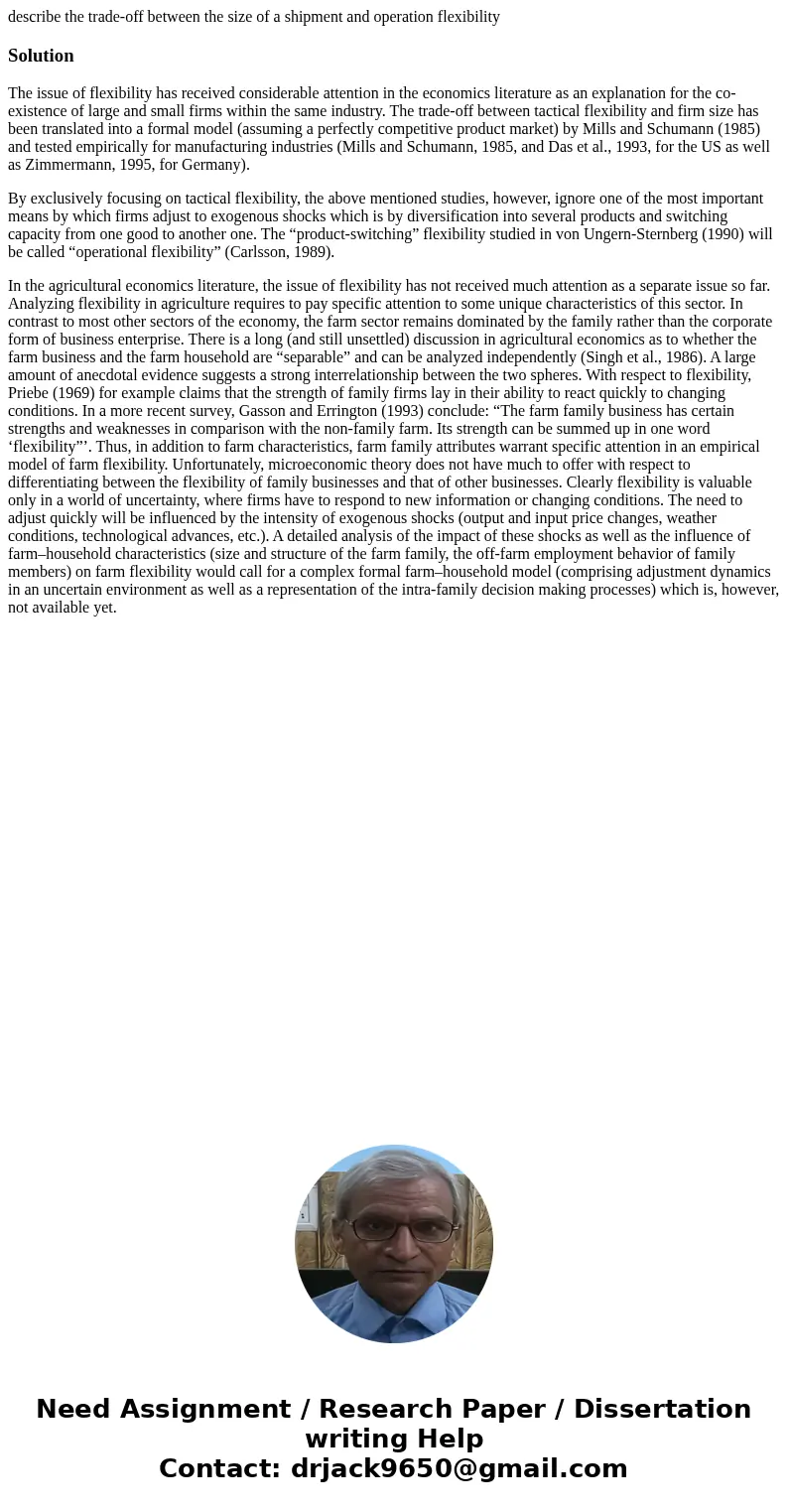describe the tradeoff between the size of a shipment and ope
describe the trade-off between the size of a shipment and operation flexibility
Solution
The issue of flexibility has received considerable attention in the economics literature as an explanation for the co-existence of large and small firms within the same industry. The trade-off between tactical flexibility and firm size has been translated into a formal model (assuming a perfectly competitive product market) by Mills and Schumann (1985) and tested empirically for manufacturing industries (Mills and Schumann, 1985, and Das et al., 1993, for the US as well as Zimmermann, 1995, for Germany).
By exclusively focusing on tactical flexibility, the above mentioned studies, however, ignore one of the most important means by which firms adjust to exogenous shocks which is by diversification into several products and switching capacity from one good to another one. The “product-switching” flexibility studied in von Ungern-Sternberg (1990) will be called “operational flexibility” (Carlsson, 1989).
In the agricultural economics literature, the issue of flexibility has not received much attention as a separate issue so far. Analyzing flexibility in agriculture requires to pay specific attention to some unique characteristics of this sector. In contrast to most other sectors of the economy, the farm sector remains dominated by the family rather than the corporate form of business enterprise. There is a long (and still unsettled) discussion in agricultural economics as to whether the farm business and the farm household are “separable” and can be analyzed independently (Singh et al., 1986). A large amount of anecdotal evidence suggests a strong interrelationship between the two spheres. With respect to flexibility, Priebe (1969) for example claims that the strength of family firms lay in their ability to react quickly to changing conditions. In a more recent survey, Gasson and Errington (1993) conclude: “The farm family business has certain strengths and weaknesses in comparison with the non-family farm. Its strength can be summed up in one word ‘flexibility”’. Thus, in addition to farm characteristics, farm family attributes warrant specific attention in an empirical model of farm flexibility. Unfortunately, microeconomic theory does not have much to offer with respect to differentiating between the flexibility of family businesses and that of other businesses. Clearly flexibility is valuable only in a world of uncertainty, where firms have to respond to new information or changing conditions. The need to adjust quickly will be influenced by the intensity of exogenous shocks (output and input price changes, weather conditions, technological advances, etc.). A detailed analysis of the impact of these shocks as well as the influence of farm–household characteristics (size and structure of the farm family, the off-farm employment behavior of family members) on farm flexibility would call for a complex formal farm–household model (comprising adjustment dynamics in an uncertain environment as well as a representation of the intra-family decision making processes) which is, however, not available yet.

 Homework Sourse
Homework Sourse